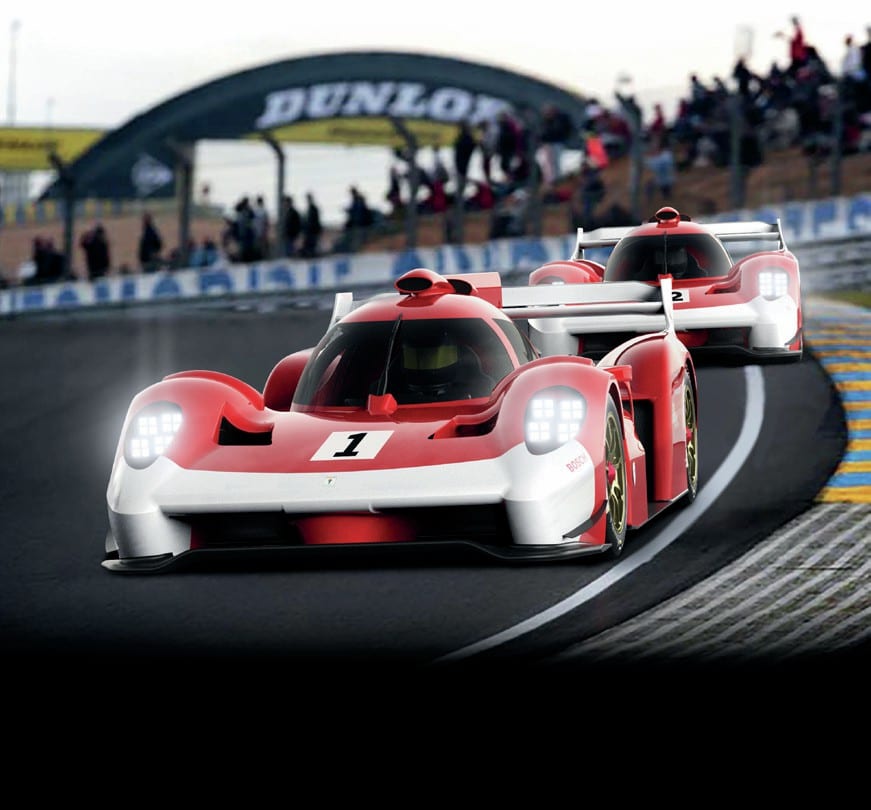Glickenhaus Hypercar: Are we due an American revolution at Le Mans?
With new Hypercar rules and the German giants out of the picture, now could be the time for Glickenhaus to shine at Le Mans

Carroll Shelby was an American pioneer at Le Mans, winning in 1959 in an Aston Martin DBR1
Bernard Cahier/Getty Images
The list of American successes at Le Mans is long and littered with star names such as Shelby, Hill, Gregory, Gurney, Foyt, Cunningham and more. Could Glickenhaus be the next to be added to the US roll of honour as the independent manufacturer prepares to make its Le Mans debut with a fresh Hypercar entry?
Jim Glickenhaus’ eponymous concern is gearing up to run two of its new twin-turbo V8 LMH 007s at this year’s event, and has already unveiled a star list of drivers – including Briton Richard Westbrook and two-time Le Mans winner Romain Dumas. The cars will also be operated by the Joest Racing outfit, which formerly ran Audi’s ultrasuccessful works efforts.
The team hardly smacks of an amateur effort, and the New York-based entrepreneur and film producer behind it insists that he wants to write a new chapter in American history at Le Mans. Speaking to Motor Sport, Glickenhaus said: “It’s always been a dream of mine to go to Le Mans, so when this magic moment in Hypercars came up, we were really the first company to say that we’re going to compete. I remember the incredible battles of the ’60s and people like Carroll Shelby, Jim Hall and before that, Briggs Cunningham, bringing American cars to Le Mans.
“This is performance art. I always wanted to go and stand in the rain and watch a car at three in the morning with our name on it go by. We’ll do our best to get a really respectable result. Could we win? It’s not impossible…”

Jim Glickenhaus dreams of Old Glory at the Sarthe. Is his 007 ready to make Le Mans history?
The ACO’s new Le Mans Hypercar rules have already attracted the likes of Toyota and Peugeot (from 2022), together with privateers Glickenhaus and ByKolles. Those cars will then be joined by the new LMDh machines from 2022, with both Porsche and Audi planning entries from 2023. LMDh rules have been largely devised by the North American IMSA series as a replacement for Daytona Prototypes, and have been accepted by the ACO and FIA to run in the World Endurance Championship and at Le Mans.
While both types of car are meant to run under a new equalisation scheme to give both a chance of winning major endurance races across both continents, would an LMDh really be allowed to beat a Le Mans Hypercar in its own back yard? Glickenhaus has his doubts.
“Does anyone seriously believe that an LMH is going to be allowed to win the 24 Hours of Daytona? Or conversely, that an LMDh would be allowed to win Le Mans under BoP?” he said. “I don’t know, and I’ve said pointblank to the ACO and to IMSA that until fans believe that there is real equality and chance, I’m not sure where convergence is.
“When LMDh gets thrown into the mix [at Le Mans] it’s going to be very difficult to balance those cars with the Hypercars. The Hypercars will be a lot faster. To be very honest, we feel that convergence should have been one set of specifications from day one for the top class at Le Mans and Daytona but it wasn’t to be. IMSA decided to go down their own road.”
Toyota is already pushing ahead with its new GR010 Hybrid, which has already begun its testing programme ahead of this year. After running at both Paul Ricard and the Algarve, the team completed a three-day test at Aragon, which included an all-night run.
While those brands are busy planning for their futures, one manufacturer that won’t be joining them is Mazda, which has confirmed it will cease its long-running IMSA programme at the end of this season. The Japanese firm has chosen to focus on its grassroots MX-5 Cup instead while the new rules convergence takes shape.
